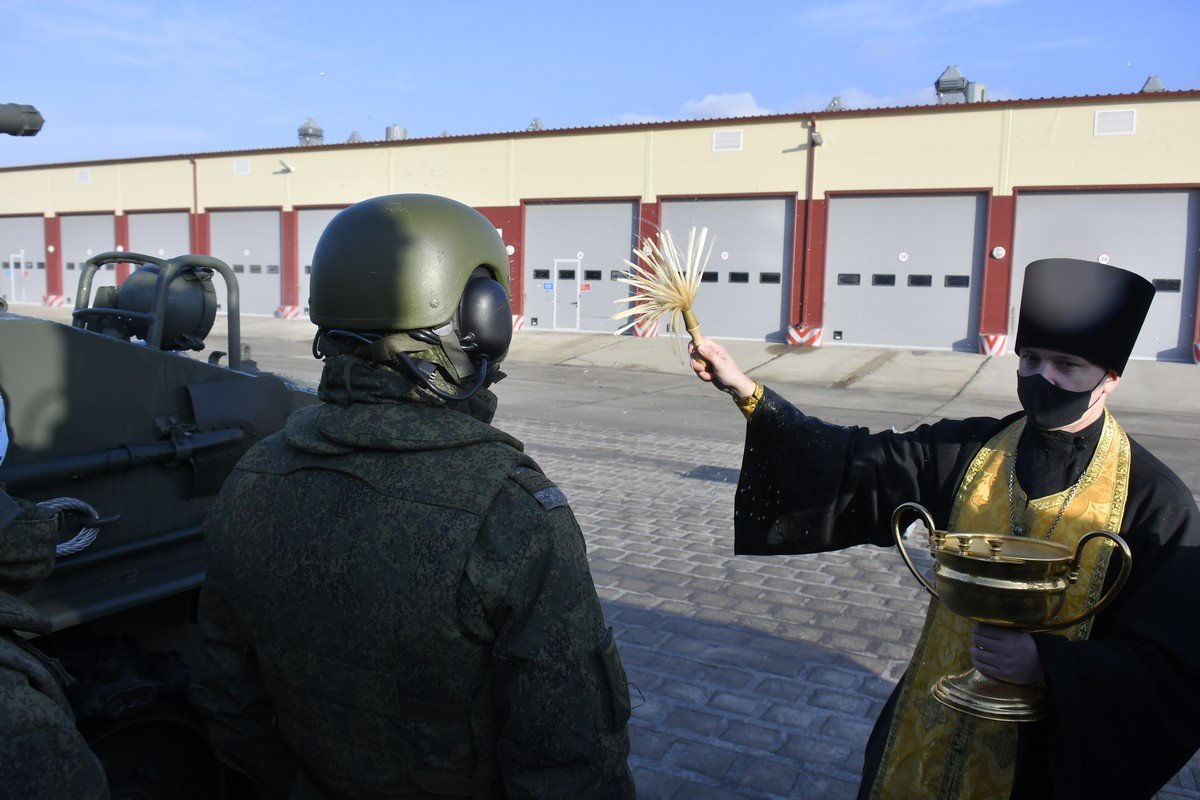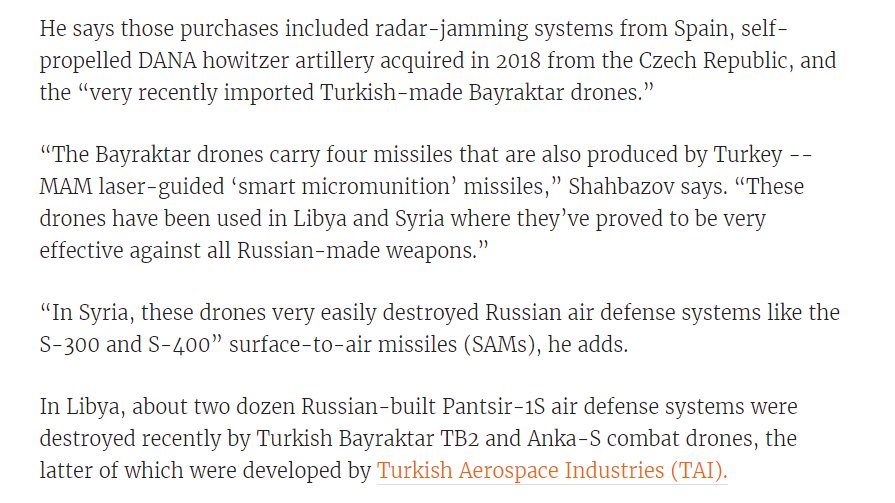
Since I'm seeing a number of people tweet this article, I'm gonna type up a thread listing some errors, questionable conclusions, and weak sources. There are many important lessons from this conflict, and this article draws some wrong ones.
https://twitter.com/KCH_Jans/status/1331205557856985090
First, the article states that "Armenia had just received eight Su-30 interceptors from Russia this summer". Armenia received its first 4 Su-30SM in December 2019. As far as I'm aware, they haven't received anymore though there were plans for 8 more. 2/
https://twitter.com/RALee85/status/1207775509633011720
I haven't seen evidence that Russia forced Armenia to ground its Su-30SM. Instead, if Armenia had used these 4 fighters, they likely would have been shot down by Turkey's F-16s or Azer air defenses. Plus, Armenian officials claimed that their Su-30SM never received missiles. 3/ 




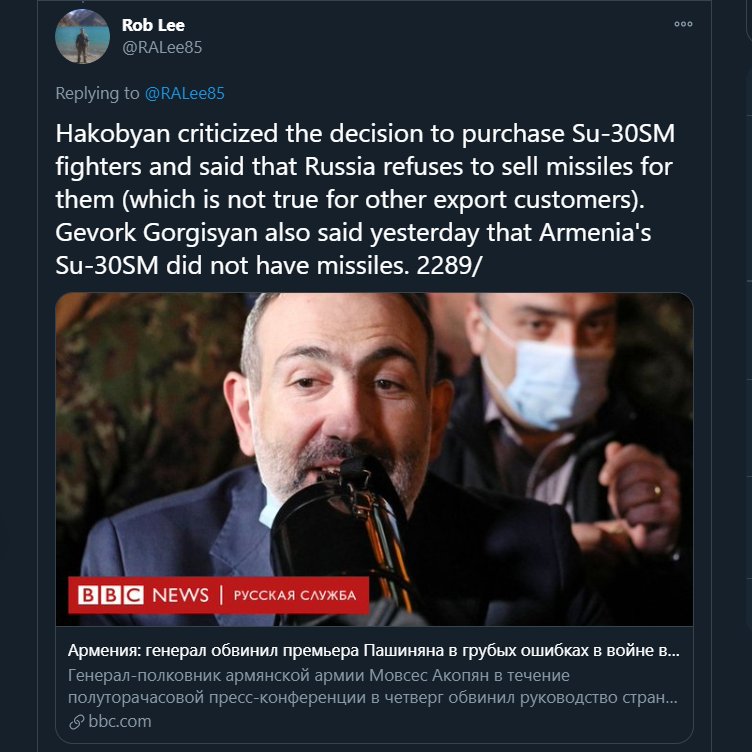


Armenian pilots also only had limited time on these Su-30SM and they have no history with these kind of fighters. Su-30SM played little role in the conflict because their purchase was more about prestige than military needs. Blaming Russia for this is a poor lesson to draw. 4/ 
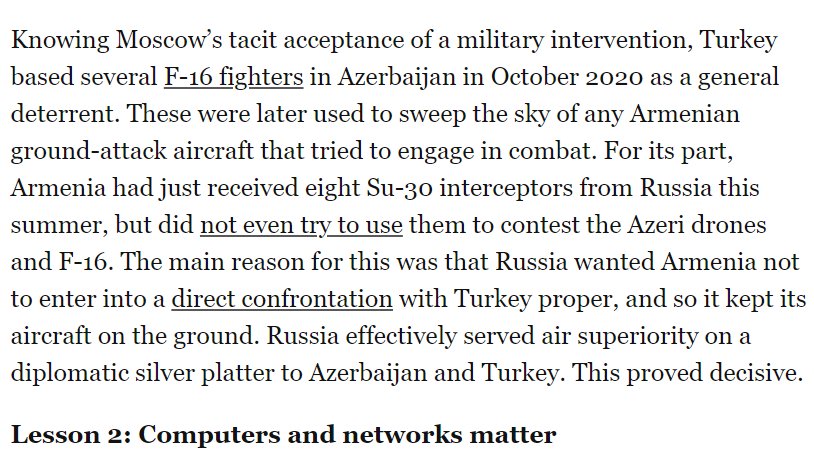
There is no evidence that Russian Krasukha-4 EW systems were used in Karabakh. He uses this Asia Times article as his source, which says "If true – and no one has denied it". Really? Does that sound like a serious source? 5/ 

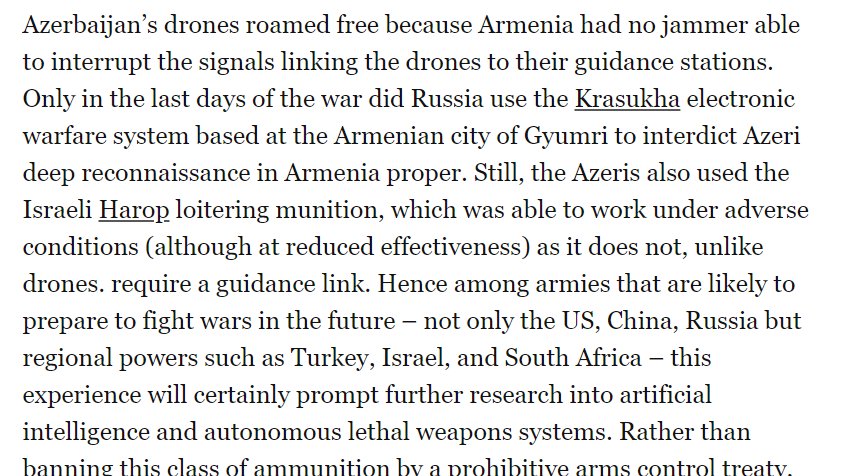
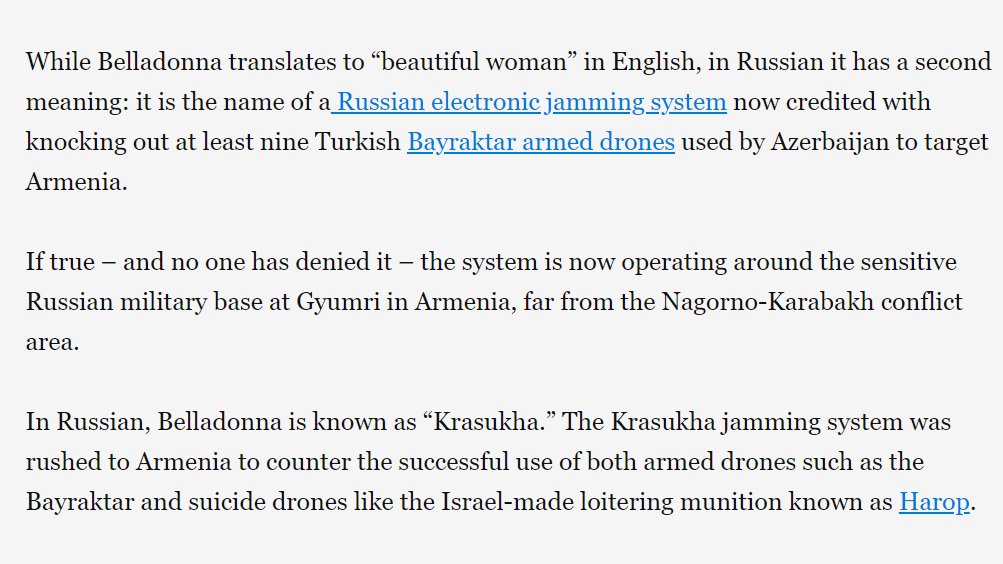
That entire article is based on an article by Avia pro, a Russian language site that has a history of making hyperbolic or false claims. Neither the Asia Times nor the ECFR piece notes that it is a questionable source (and neither links to it). 6/
avia.pro/news/no-fly-zo…
avia.pro/news/no-fly-zo…
The article claims that Russian Krasukha-4 downed 9 TB2 in 48 hours (and falsely claimed they cost $8-10 million). There is evidence that 2 (possibly 3) TB2 were lost during the conflict (the 3rd may have just been Armenian forces photographing the 1st TB2 wreckage elsewhere). 7/
Armenia first published a video of a TB2's WESCAM CMX 15D turret on Oct 19th but no other components (and strangely not from the crash sight). Then photos of a crashed TB2 on Oct 21 and another on Nov 8. We would have seen more evidence if 9 were downed.8/


https://twitter.com/RALee85/status/1325388147866349573
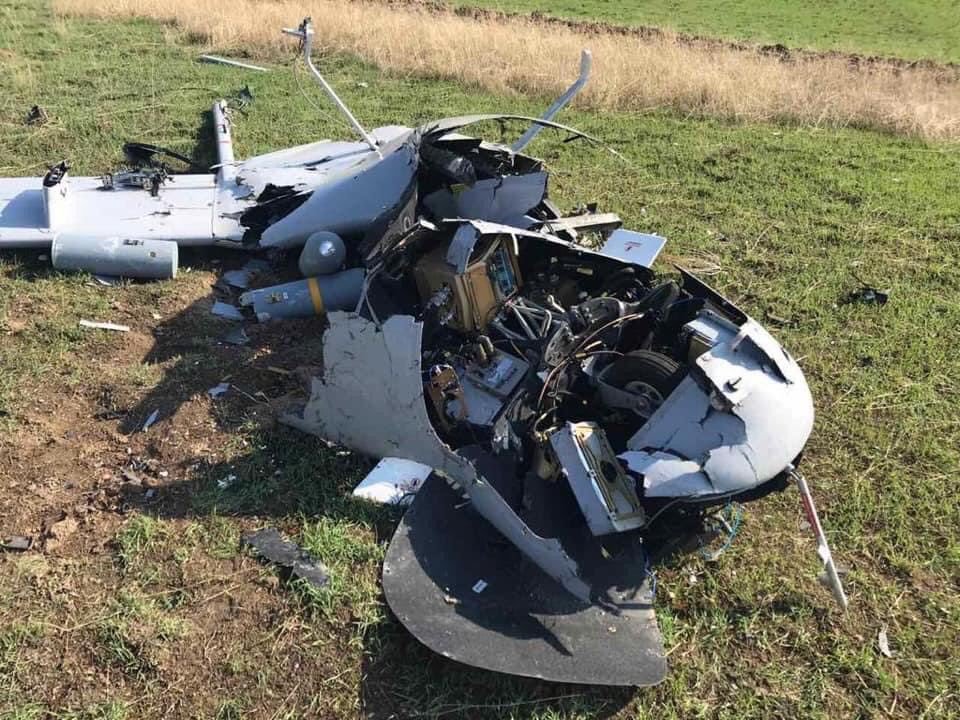
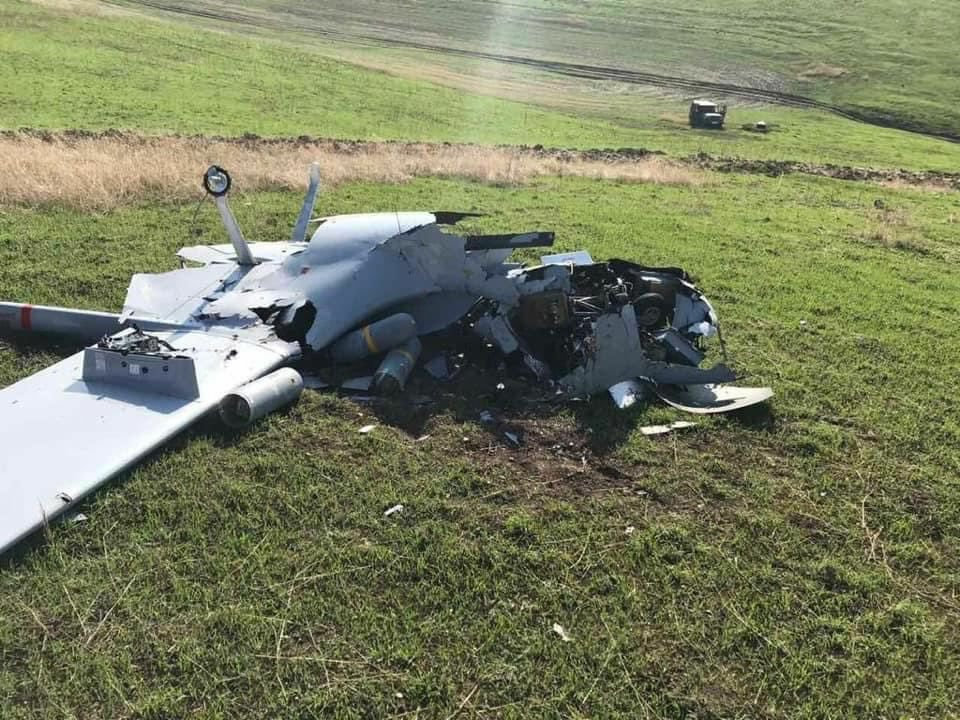
Of course, TB2 continued to strike Armenian targets throughout the rest of the conflict. Why would Russia use these systems and then stop? Instead, Colonel General Hakobyan claimed that Armenia used Polye-21 EW systems with limited success against TB2. 9/
bbc.com/russian/featur…
bbc.com/russian/featur…
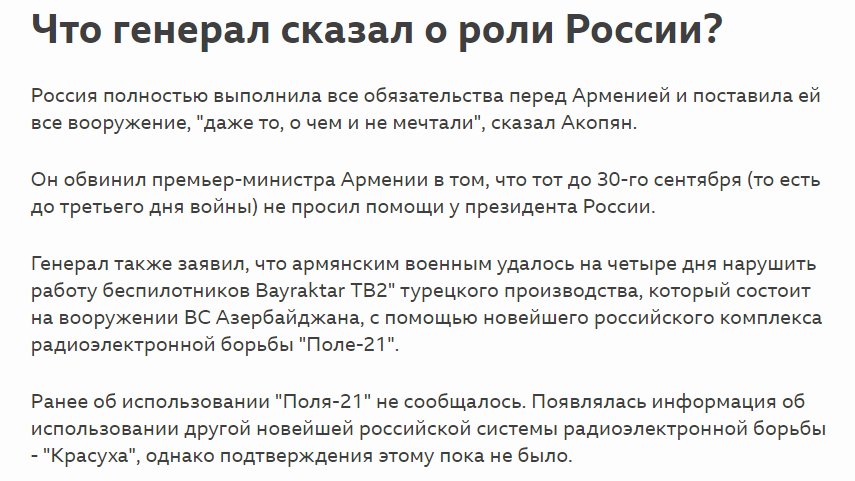
The Krasukha-4 story is indicative of a problem in defense articles. Often times, a questionable source will be used, which will then be picked up over and over again until it spreads to reputable outlets, and people don't realize how weak the initial source was. 10/
This point about Russian AD systems being ineffective against UAVs in Libya and Syria isn't true. Lost Armour ID'd 20 TB2 losses in Libya over the past year and 3 TB2 and 2 Anka-S UCAVs in Idlib in Feb-Mar. Some of these may be repeats but most aren't. 11/
lostarmour.info/syria/


lostarmour.info/syria/

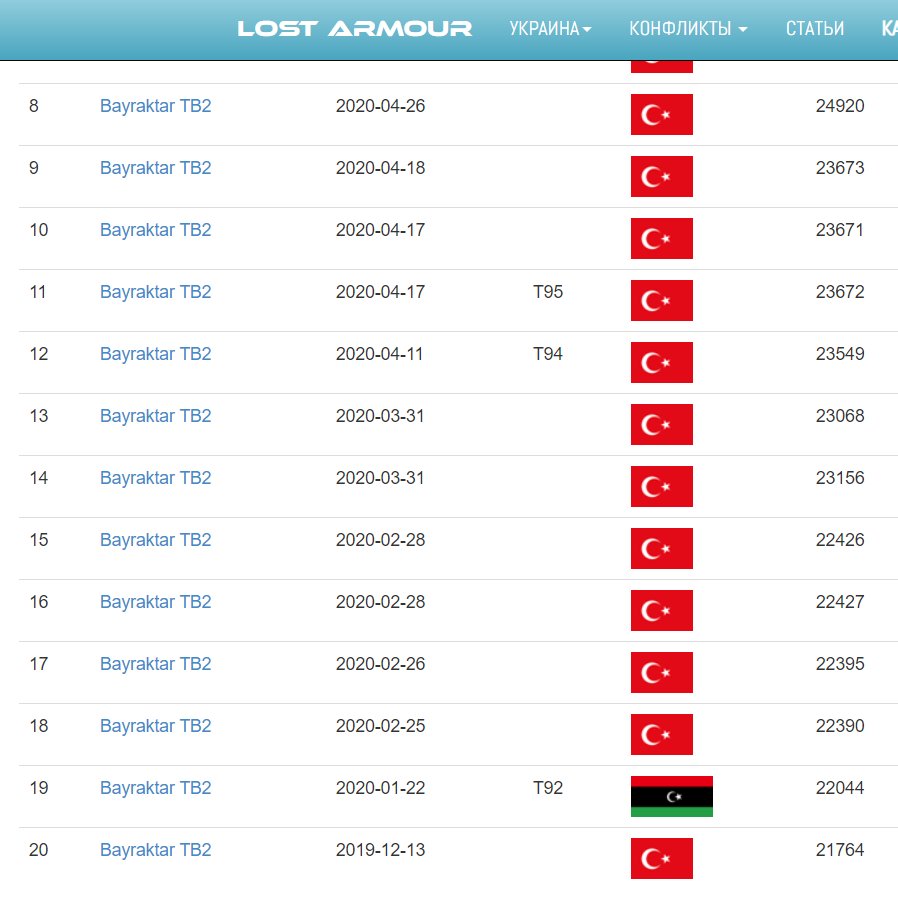
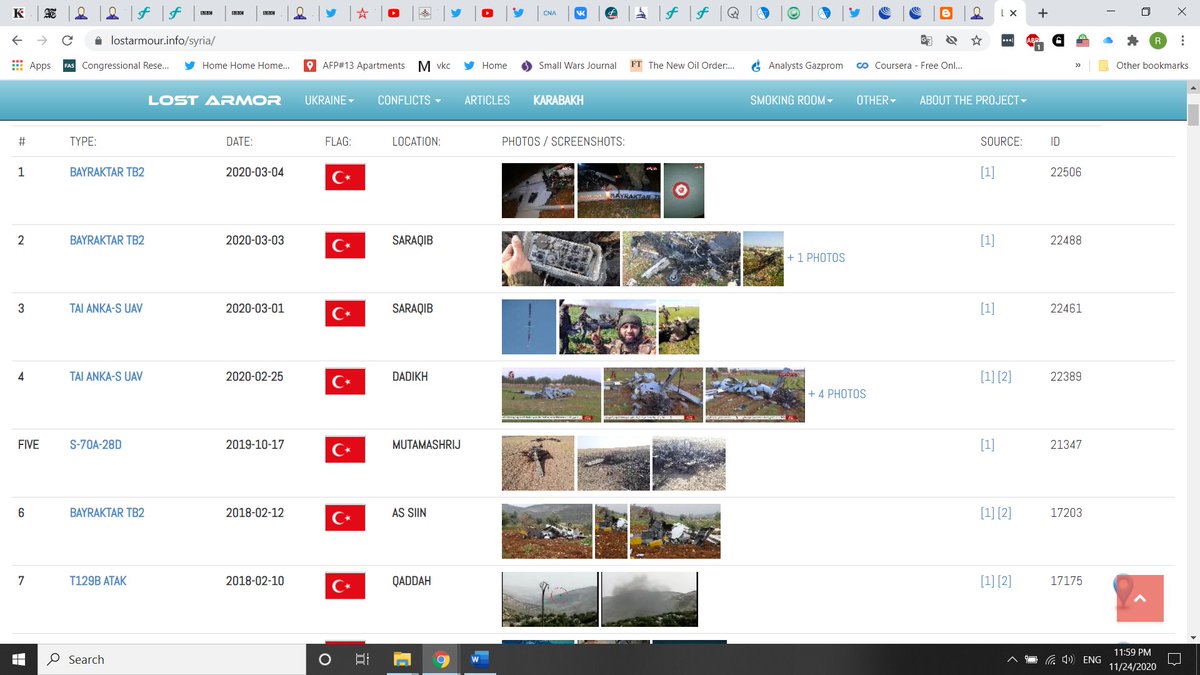
One of the lessons from this conflict is that older AD systems, like Strela-10 and Osa-AK/AKM can't counter UCAVs and loitering munitions, but Pantsir-S and Tor-M2 can (though they aren't full proof). Training, tactics, EW, supporting assets, etc all matter in UCAV vs SHORAD. 12/
S-300PT/PS and Buk-M1 aren't Armenia's newest AD systems. Armenia received Tor-M2KM, Russia's best SHORAD, in December 2019. It appears they were only moved to the front at the end, and likely shot down that last TB2 (one was destroyed). Armenia didn't have enough of them. 13/ 



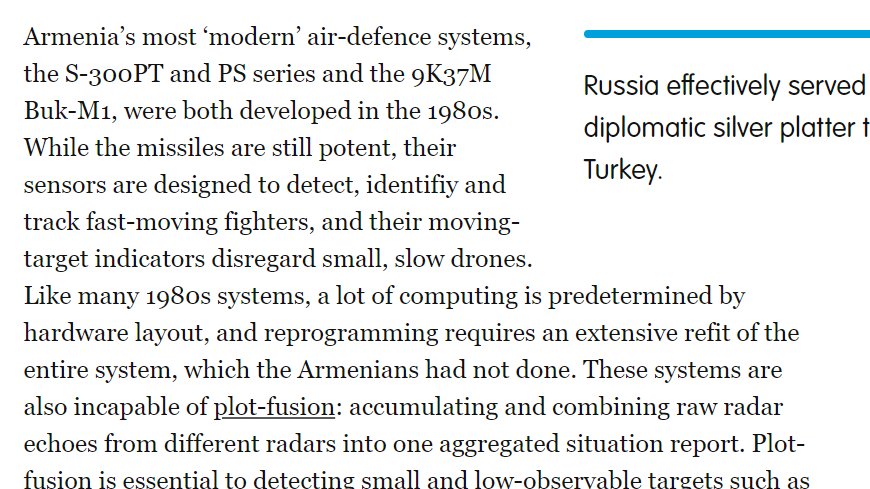
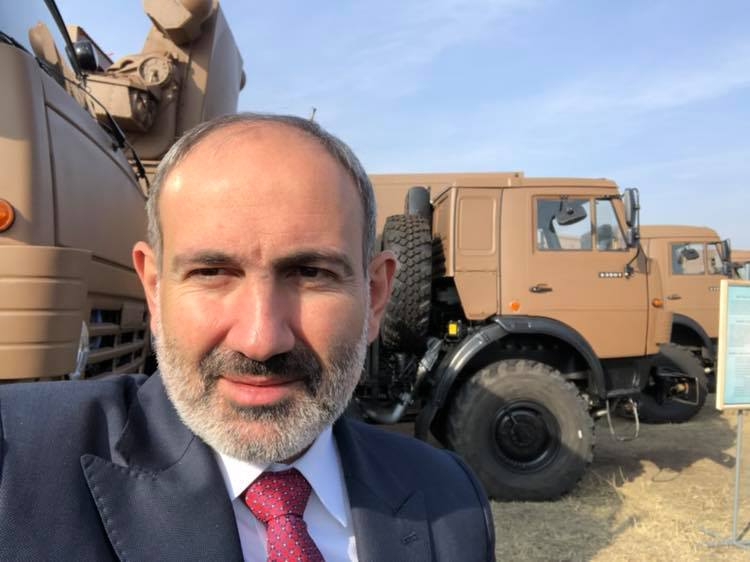
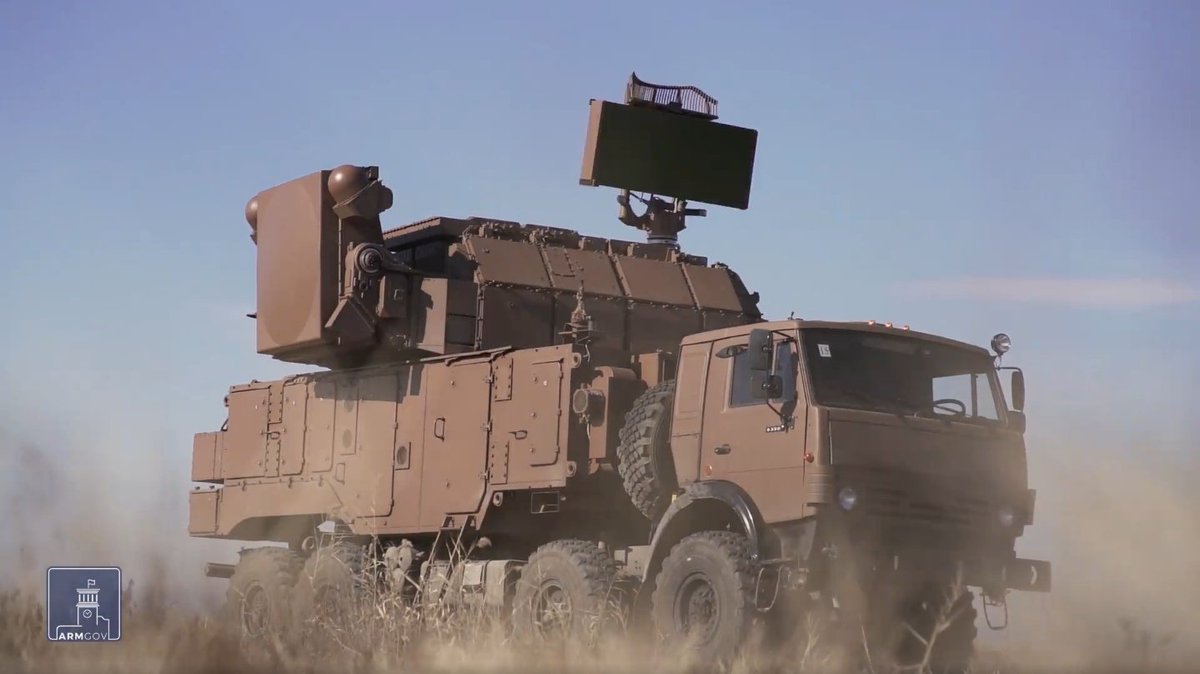
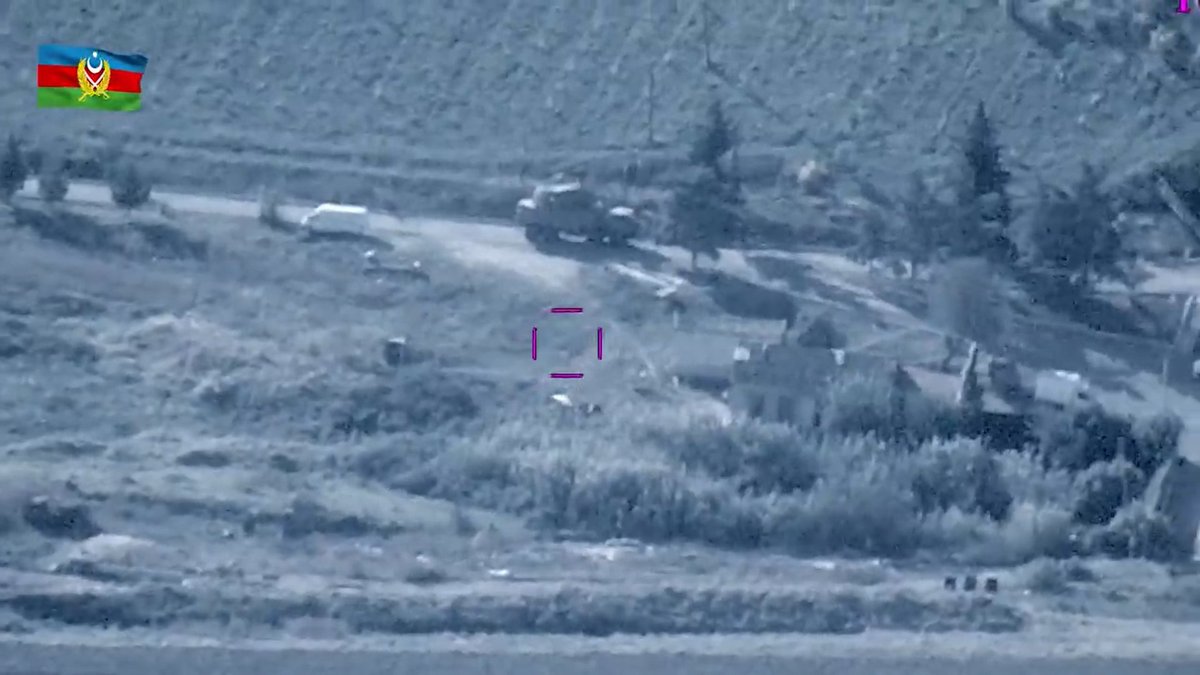
Armenia also has Buk-M1-2 air defense systems, which are late 1990s tech, not 1980s. Though there is no indication they were employed. Another thing to note is that all of the strikes on Armenian S-300 radar and TELs were apparently conducted by loitering munitions not TB2. 14/
It is bizarre that he mentioned a Az Sputnik report from October as his source for total losses. @oryxspioenkop has the best run down of visually confirmed losses on both sides (the real total is higher), which isn't far off from the Sputnik report. 15/
oryxspioenkop.com/2020/09/the-fi…
oryxspioenkop.com/2020/09/the-fi…
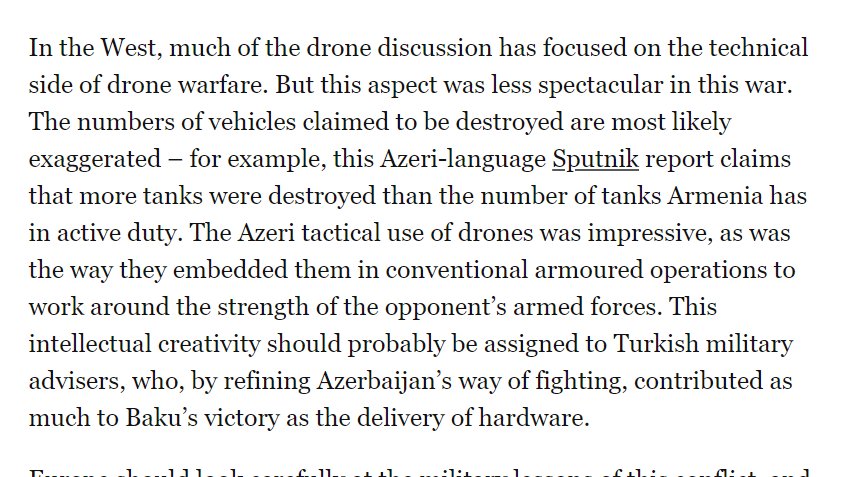
I agree with his overall point here that MANPADS aren't sufficient against UCAVs and loitering munitions, but there is virtually no information about MANPADS being destroyed in this conflict. I'm sure some were, but I think he is just averring something that isn't proven. 16/ 

LORA was used, but it didn't completely destroy this bridge (there were at least 2 strikes) and there was a 2nd bridge used as an alternative. Certainly this hindered deploying reinforcements, but Armenia continued to bring in reserves up through the battle for Shusha.17/ 



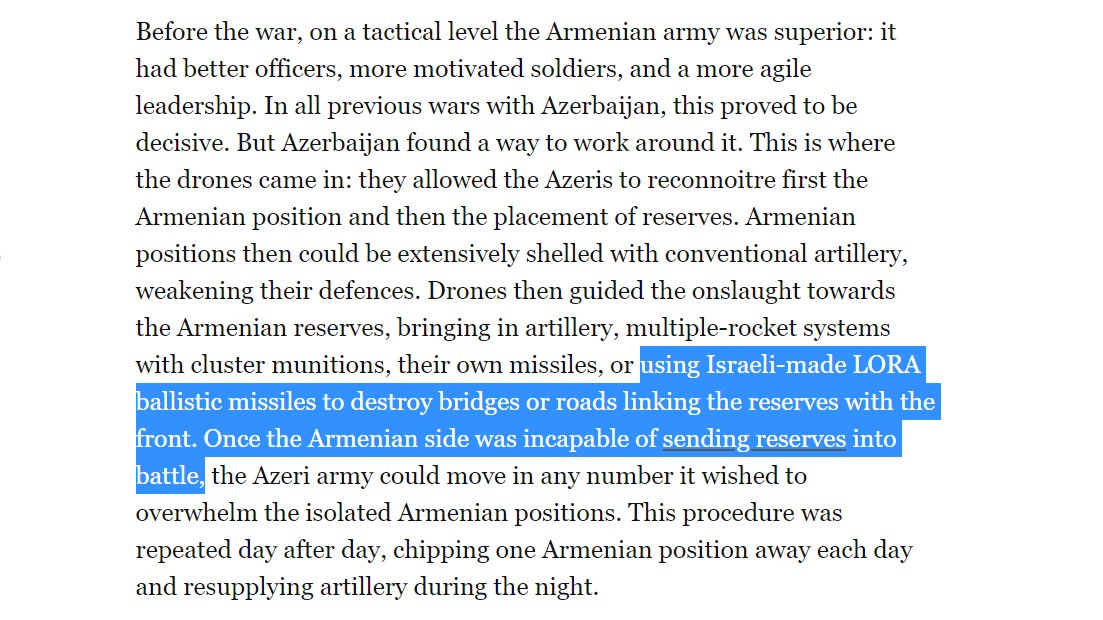
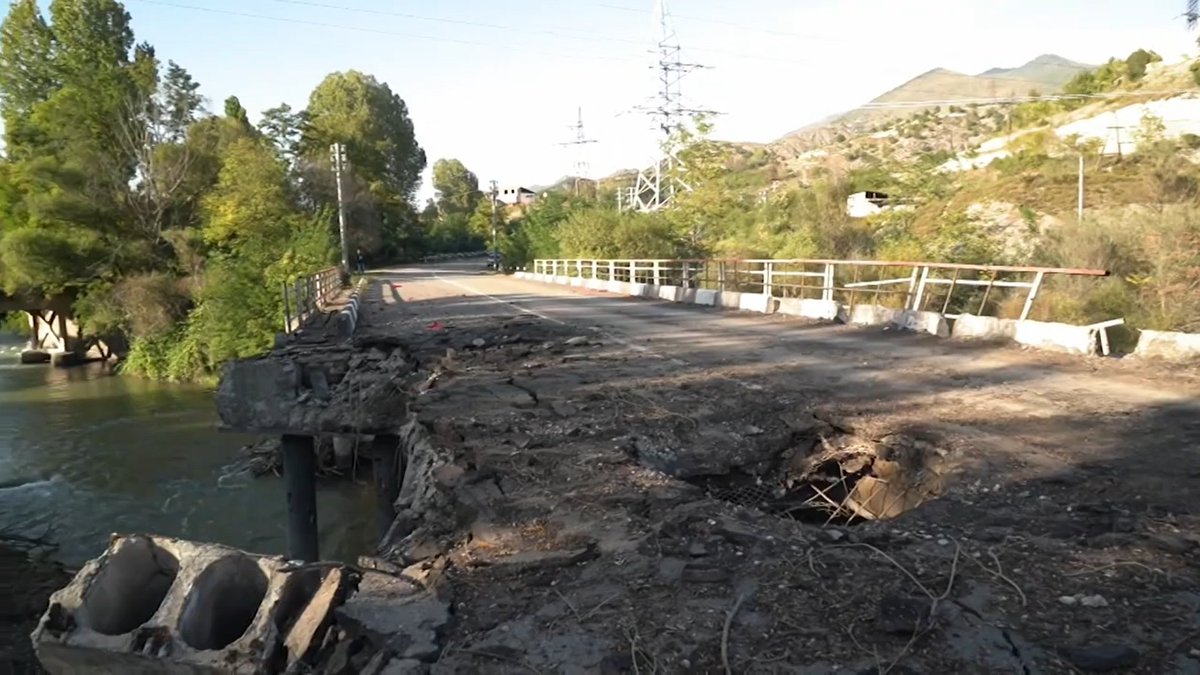

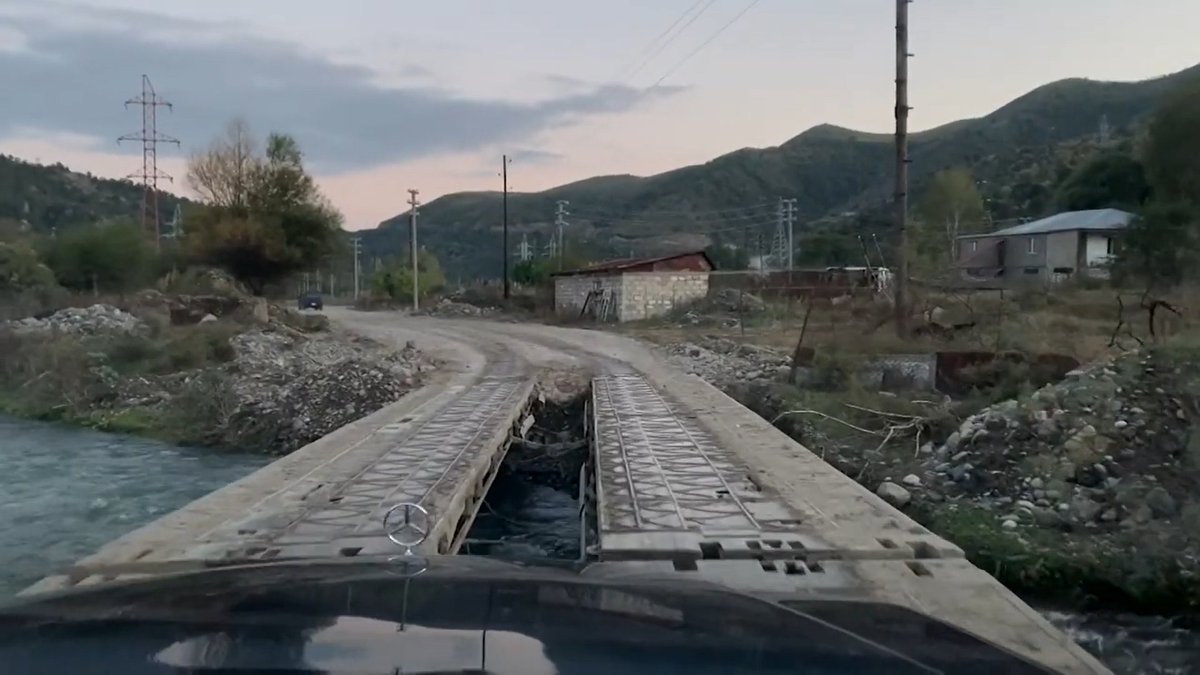
Azerbaijan only had limited success in northern Karabakh, which has the most mountainous terrain. The terrain around Shusha doesn't compare, plus they didn't have well-prepared positions there, unlike northern Karabakh. That's why Az focused its assault in the south. 18/ 



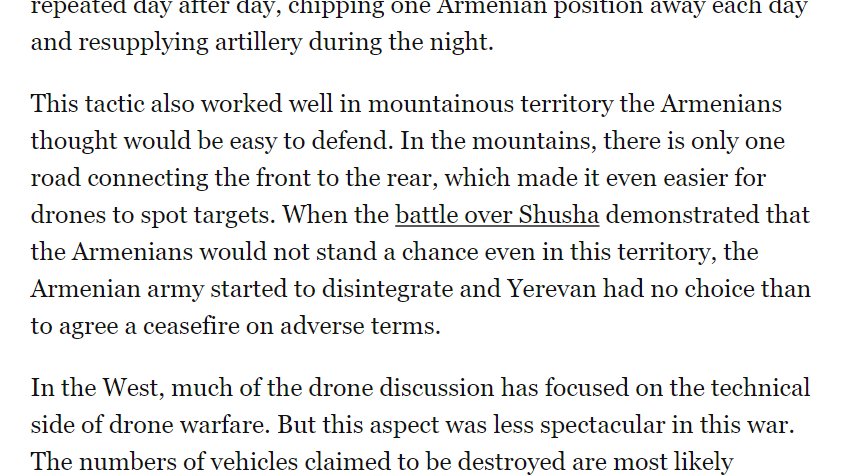
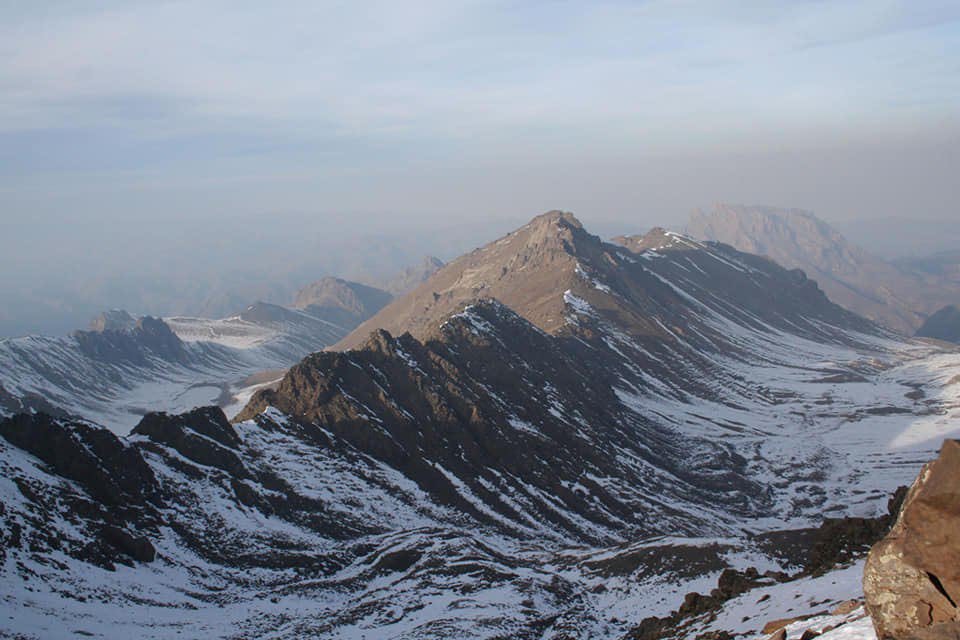

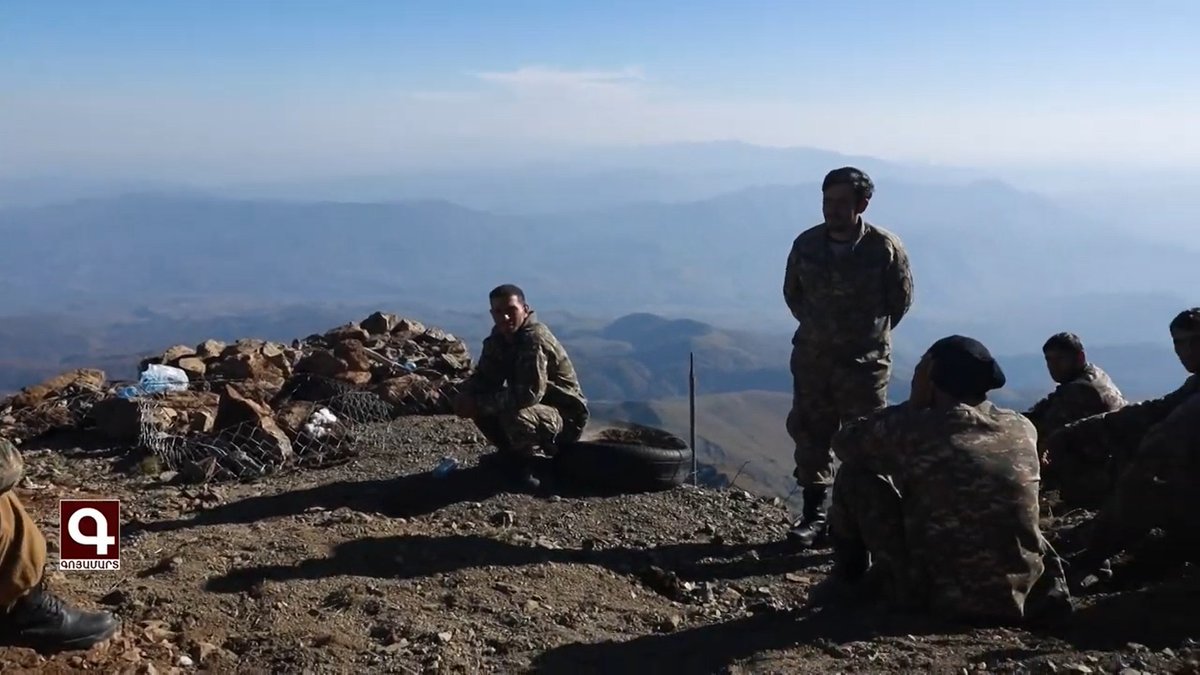
I don't put much credence into the theory that Russia wanted this conflict to happen. Why deliver modern arms essentially for free this year to Armenia? Moscow didn't know in Sep that the final resolution would be relatively advantageous for it. Plus, the CSTO looks weaker. 19/ 
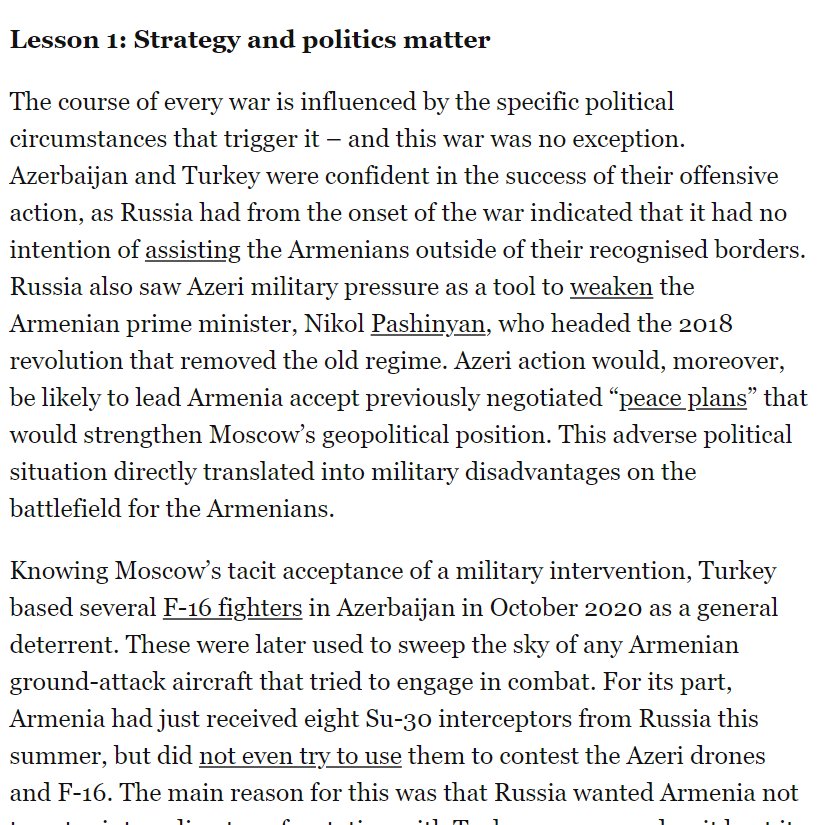
We didn't know that Azerbaijan had TB2 (likely 10 or more operated by Turkish crews), that there would be Turkish F-16s, that they would receive such a degree of Turkish support (likely including intel, targeting, C2, etc.), and Turkey has a lot of recent combat experience. 20/ 
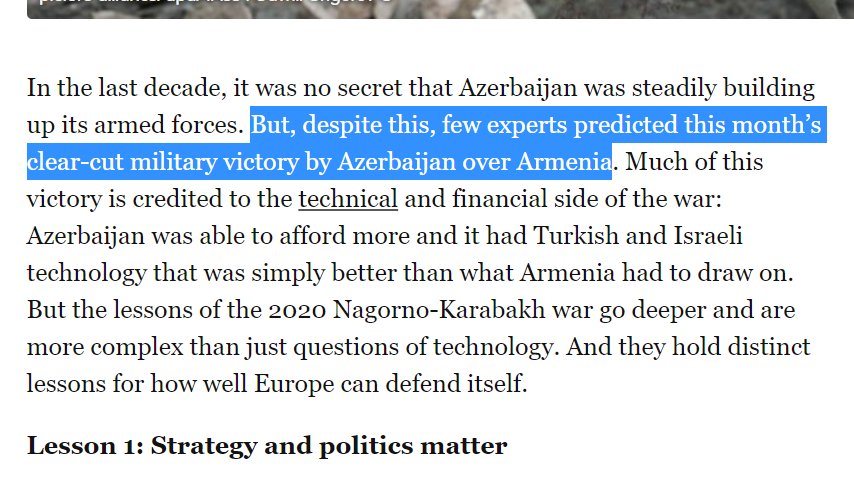
Circling back to this. Turkey's F-16 arrived in Azerbaijan for an exercise in July and never left. Armenia had no fighters before the Su-30SM arrived in Dec 2019. Su-25 are not air superiority fighters. To say that Russia handed Azerbaijan air superiority is hyperbole. 21/ 

I agree that we need greater SHORAD and EW, but we should note that the TB2's range is only 150km from its ground control stations or repeaters and it needs an airfield. That means that they can be destroyed on the ground or their airfields with stand-off weapons and airpower.22/ 

And to emphasize, I'm not trying to dunk on anyone. There is still a lot we don't know, but this war, like most recent conflicts, produced a huge amount of info, with thousand of cell phone and UAV videos. You have to watch it closely everyday to notice many of these details.
• • •
Missing some Tweet in this thread? You can try to
force a refresh















